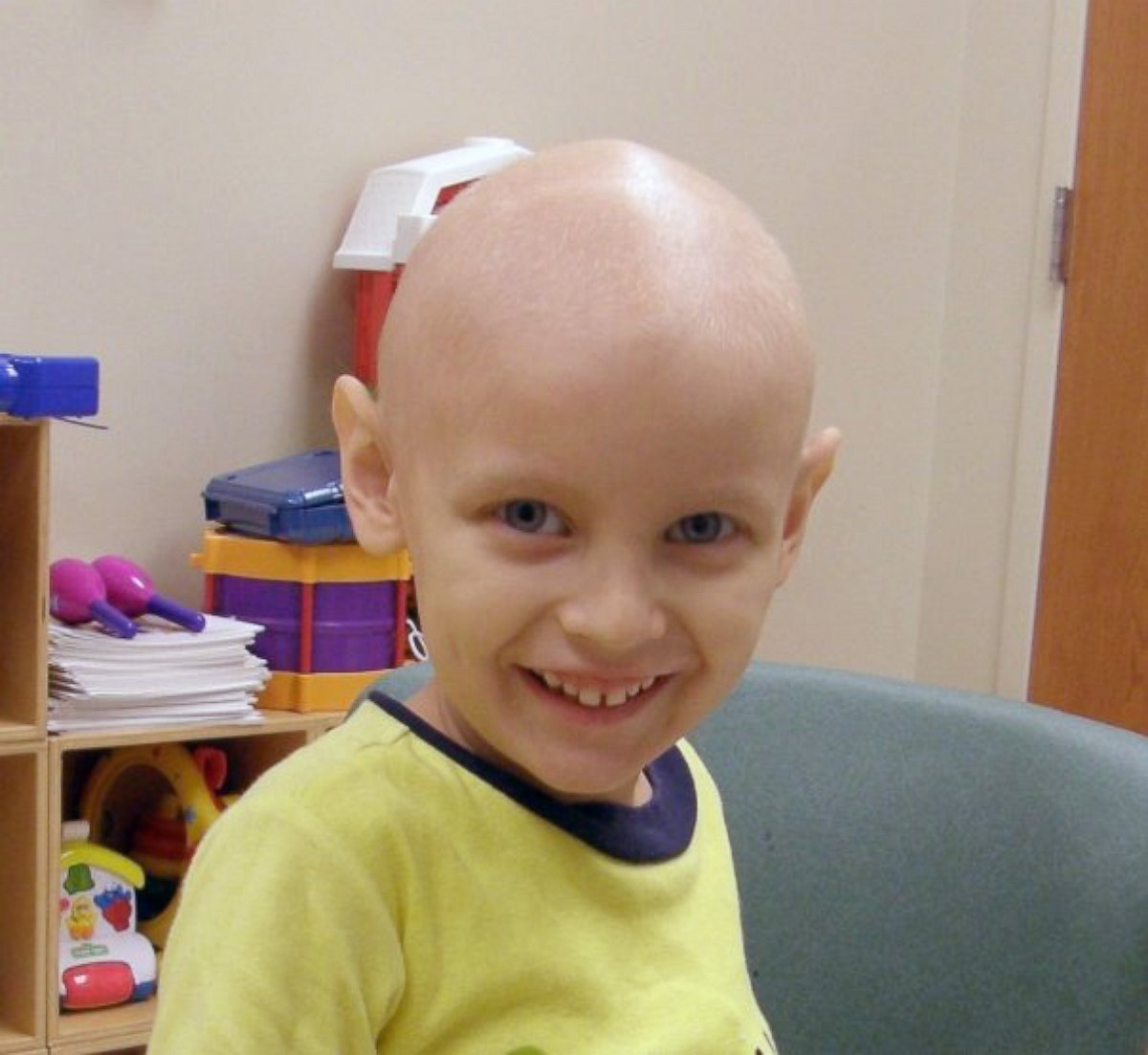Viral Cancer Ad the Result of Makeup and Bald Cap
A Mississippi hospital doctored the image of a former cancer patient for an ad.
May 22, 2014 — -- A little boy’s sick/healthy cancer photo has gone viral in the last several days, garnering headlines about the “striking” and “inspiring” transformation he underwent. But the magic of medicine depicted in the advertisement is actually the magic of makeup, a bald cap and Photoshop.
The “Proof of Life” ad featuring a boy identified only as “Noah,” an “actual patient” at the Children’s Cancer Center at University of Mississippi Health Care, is a reenactment of the boy’s story rather than real photos of his progress, as several publications wrongly assumed.
“They did the makeup and everything on him,” the boy’s mother, Christy Moudy, told ABCNews.com of the photo shoot, adding that the experience was positive but difficult for her. “It brought back so many memories. It was so heartbreaking.”

Noah Moudy really did battle cancer, but not when he was 7, which is how old he was when both photos were taken three years ago.
When Noah was 4 years old, he was diagnosed with an aggressive form of leukemia called acute myeloid leukemia, or AML, said Moudy, 38, of Petal, Mississippi. He underwent chemotherapy and a bone marrow transplant about two years before the hospital asked him to participate in the ad.
Noah looked even worse when he was undergoing treatment than he did under the layers of makeup, Moudy said.
“During his transplant, oh my God, he was so skinny. Oh, it was horrible,” Moudy said. “After that, he was a champion.”

Now, Noah is 10 years old and has been cancer-free for five years, Moudy said. Her family loves to see the ad go viral, which she said happens about once a year.
“I don’t know if it’s the way they did the before and after of it, but it’s touched a lot of people,” she said. “It brought a lot of awareness.”
Although the ad made clear that Noah was diagnosed with cancer when he was 4 and “today, Noah is seven years old, living cancer free and dreaming,” it didn’t say that the photo was doctored to make him look sick.
“I suppose that the first response would be to cringe a little bit at that as being dishonest or not fully truthful, especially if there’s no caveat or small print that it’s a representation and not meant to depict reality,” said Dr. Matthew DeCamp, a professor at the Johns Hopkins Berman Institute of Bioethics.
Although DeCamp said he wasn’t aware of a specific code of ethics for hospital marketing, he said he would assume truthfulness would somehow be part of one.
Then again, he wondered whether photos of an actively sick child would actually be more exploitative than mocked-up photos, he said.
“I could at least imagine a scenario with a patient who is now very proud of what they just went through and wants to show people about it,” DeCamp said. “In a sense, wanting to normalize the experience of illness in a way that could be helpful to others.”
Jack Mazurak, a spokesman for Children’s Cancer Center at University of Mississippi Health Care, said some reports on the photo did not show it in the context of the full ad.
“This was part of an ad campaign centered on the concept of therapeutic success stories,” he told ABC News. “As the ad copy says, he was 4 when diagnosed and 7 when the campaign was created. ... Some of the media attention in the last few days -- social and traditional – didn’t include the ad copy.”




